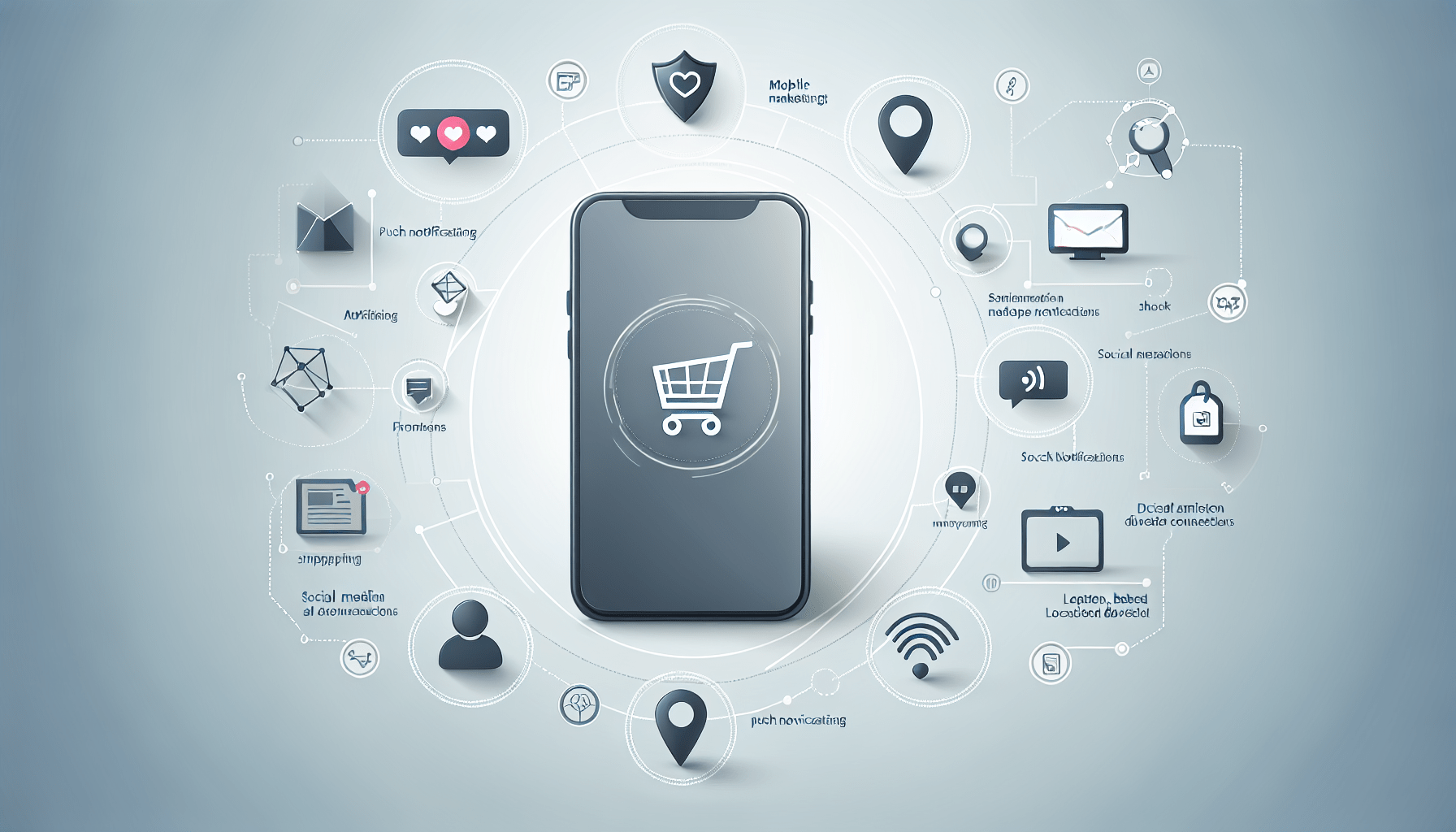Are you overwhelmed by the thought of developing a mobile marketing strategy? You’re not alone! With everyone glued to their phones, figuring out how to reach your audience can feel like a daunting task, but it’s essential for your business.
But don’t worry! If you stick with me, I’ll share some practical steps that will make crafting an effective mobile marketing strategy a breeze. You’ll soon discover how to connect with your audience right where they are—on their devices!
From optimizing your website to using SMS marketing, we’ll cover all the key tactics that can elevate your mobile presence. Get ready to transform your marketing approach and engage your customers like never before!
Key Takeaways
Stefan’s Audio Takeaway
- Understand your audience and choose the right platforms for your mobile marketing.
- Optimize your website to be mobile-friendly for a better user experience.
- Set specific, measurable goals for tracking success in your strategy.
- Create a mobile app to enhance customer engagement and brand loyalty.
- Utilize mobile search engine marketing to target users effectively.
- Leverage social media for engaging content and audience interaction.
- Implement location-based advertising for targeted promotions.
- Optimize for voice search to capture local market interest.
- Use SMS marketing for high engagement with concise messages.
- Personalize your marketing efforts based on customer data and preferences.
- Design email campaigns that are mobile-responsive and easy to navigate.
- Integrate mobile marketing with your overall strategy for a seamless experience.
- Utilize real-time analytics for informed decision-making and adjustments.
- Employ diverse tactics to maximize reach and consumer engagement.
- Customize the user experience for mobile to stand out from competitors.

1. Develop a Mobile Marketing Strategy
Creating a mobile marketing strategy is your first step toward reaching customers where they spend most of their time: on their phones.
Start by understanding your audience—what they like, where they hang out online, and how they shop.
Use data from tools like Google Analytics to identify these trends.
Next, create a plan that focuses on platforms they’re most active on, such as social media or SMS.
Consider including a mix of content types: videos, blogs, and ads that resonate with your brand voice.
Finally, don’t forget to monitor performance; tweak your strategy based on what works and what doesn’t.
2. Optimize Your Website for Mobile Devices
In today’s world, if your website isn’t mobile-friendly, it’s like setting up a shop with no entrance sign.
Start by using responsive design, ensuring your site looks good on any screen size.
Make navigation simple—users shouldn’t have to pinch and zoom to find what they’re looking for.
Also, optimize loading speed; users tend to bounce if they have to wait too long.
Tools like Google’s PageSpeed Insights can help you identify areas needing improvement.
Lastly, remember to test your website on actual mobile devices to get a real feel for the user experience.
3. Set Clear and Measurable Goals
To make any marketing strategy work, setting clear goals is key.
Think about what success looks like for you—whether it’s increased website traffic, more app downloads, or boosting sales through mobile ads.
Using the SMART framework can be super helpful here: Specific, Measurable, Achievable, Relevant, and Time-bound.
For example, instead of saying, “I want more customers,” say, “I want to increase mobile sales by 20% in the next three months.”
After you set those goals, track your progress regularly to see if you’re on the right path, and adjust your tactics if needed.

4. Create a Mobile Application
Building a mobile application can be a game-changer for your business.
A well-designed app keeps your brand in users’ pockets, allowing for 24/7 engagement.
Start by identifying what features your target audience needs the most.
Consider integrating features like push notifications, shopping carts, and user profiles.
Don’t forget to invest in user experience; a complicated app can deter users.
Once your app is live, solicit user feedback and continuously iterate to improve its functionality.
According to statistics, mobile app users spend 4 hours daily on their devices—capitalize on that by keeping them engaged with your app.
5. Use Mobile Search Engine Marketing
Mobile search engine marketing is essential since consumers increasingly use mobile for their buying journey.
Start by optimizing your ad campaigns for mobile devices and ensuring your landing pages load quickly.
Target mobile keywords that match the intent of mobile users; think local searches, voice searches, and more immediate terms.
Leverage platforms like Google Ads and Facebook Ads to reach potential customers effectively.
Monitor your campaigns closely, adjusting bids and strategies based on mobile performance to maximize ROI.
6. Leverage Social Media for Mobile Engagement
Social media is a powerful tool for mobile marketing, as 90% of users access it on their smartphones.
Share visually appealing content, like live videos and stories, to grab attention.
Engage with your audience through comments and create polls or Q&As for interaction.
Take advantage of paid options to target ads specifically to your mobile audience.
Don’t ignore user-generated content—encourage customers to share their experiences using your products.
7. Implement Location-Based Advertising
Location-based advertising can significantly boost your mobile marketing efforts.
Using geofencing, you can send targeted promotions to users when they enter a specific area.
This technique makes your ads more relevant, increasing the chance of conversion.
Given that the global location-based advertising market is valued at over $62 billion, it’s a space worth exploring.
Have clear call-to-actions that guide users on what to do next, whether it’s visiting your store or checking out a limited-time offer online.
8. Optimize for Voice Search
With the rise of smart speakers and voice-activated devices, optimizing for voice search is critical.
Use natural language in your SEO strategy since people speak differently than they type.
Incorporate long-tail keywords and common questions your audience might ask.
Ensure your website is mobile-friendly, as voice searches typically occur on mobile devices.
Take note that 53% of smartphone users are performing voice searches for local businesses; don’t miss out on that crowd!
9. Use SMS and Text Marketing Effectively
SMS marketing stands out because of its incredible open rates—90-99% within just a few minutes.
Start by collecting phone numbers ethically; incentivize sign-ups with discounts or exclusive content.
Keep your messages concise and focused on one clear offer or announcement.
Testing different types of messages can help you see what resonates best with your audience.
Remember, timing is key—a message sent at the right moment can boost engagement significantly.
10. Personalize Your Mobile Marketing Efforts
Personalization can lead to better customer experiences and increased loyalty.
Use customer data to create tailored content, offers, and recommendations.
Consider using email marketing automation tools that segment your audience based on behavior and preferences.
Personalized push notifications can also lead to higher retention rates—let users feel like you know them.
Research shows that personalization can increase sales, so don’t underestimate its power!
11. Optimize Email Marketing for Mobile Devices
Email isn’t dead, especially when 75% of users check their email on mobile devices.
Design mobile-responsive emails that load quickly and look great on small screens.
Craft catchy subject lines and concise messages to capture attention instantly.
Include clear calls-to-action that guide users on what to do next without making scrolling mandatory.
Track engagement and open rates to continually refine your email strategies.
12. Integrate Mobile with Your Overall Marketing Strategy
Mobile marketing shouldn’t exist in a vacuum—it needs to be part of a holistic marketing plan.
Ensure consistency across all channels, using similar messaging, imagery, and branding.
Encourage cross-channel promotions where mobile users can access web-exclusive offers, driving engagement.
Monitor your marketing analytics to determine how mobile fits into the overall customer journey.
Strive for a seamless experience where users can transition between mobile ads, apps, and your website without losing the thread.
13. Utilize Real-Time Analytics and Testing
Data is your best friend when it comes to mobile marketing.
Use tools like Google Analytics to keep track of user behavior, engagement, and conversion rates in real-time.
Running A/B tests on different mobile strategies can truly help you understand what your audience prefers.
Remember, small tweaks can lead to significant improvements—never underestimate the power of a single headline!
Stay adaptable; the mobile landscape is always changing, and you need to keep up or risk losing your audience.
14. Employ a Variety of Mobile Marketing Tactics
Don’t put all your eggs in one basket—use various tactics to reach your audience.
From social media and SEO to mobile ads and in-app purchases, diversify your efforts.
Consider investing in influencer collaborations or affiliate marketing to tap into existing audiences.
Experiment with both organic and paid strategies to determine what makes the most impact.
A well-rounded approach will not only enhance visibility but also better engage your target consumers.
15. Customize the User Experience for Mobile
Your mobile users deserve a tailored experience that meets their needs instantly.
Implement user-centric designs that prioritize ease of navigation and accessibility.
Consider enabling features like one-click purchasing for seamless transactions.
Gather user feedback to make continuous improvements to their experience.
Ultimately, providing a unique, optimized mobile experience can set you apart from the competition.
FAQs
A mobile marketing strategy is a plan to reach and engage customers on their mobile devices. It’s important because mobile users are continually growing, and effective strategies can significantly boost visibility and conversions.
To optimize your website for mobile, ensure responsive design, fast loading speeds, easy navigation, and minimal text input. Regularly test the user experience across different devices to enhance usability and engagement.
Effective SMS marketing tactics include obtaining consent, sending personalized offers, using clear calls-to-action, and timing messages appropriately. Analyze results to refine your approach and improve future campaigns.
Leverage social media by optimizing your content for mobile viewing, using engaging visuals, encouraging user-generated content, and running targeted ads. Monitor engagement metrics to adjust strategies as needed.
